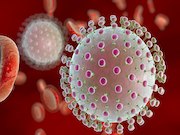From first to second half of 2016, increase in number of birth defects potentially related to Zika
MONDAY, Jan. 29, 2018 (HealthDay News) — From the first half of 2016 to the second half of 2016, there was an increase in the number of birth defects potentially related to Zika virus infection, according to research published in the Jan. 26 issue of the U.S. Centers for Disease Control and Prevention’s Morbidity and Mortality Weekly Report.
Augustina Delaney, Ph.D., from the CDC in Atlanta, and colleagues analyzed data from 15 U.S. jurisdictions conducting population-based surveillance for birth defects potentially related to Zika virus infection. Overall, 2,962 infants and fetuses met the case definition (3.0 per 1,000 live births).
The researchers identified a non-statistically significant increase in total birth defects potentially related to Zika virus infection in areas with local transmission, from 2.8 to 3.0 cases per 1,000 live births in the first and second halves of 2016, respectively (P = 0.10). The prevalence of birth defects strongly linked to congenital Zika virus infection increased significantly when neural tube defects and other early brain malformations were excluded (from 2.0 to 2.4 cases per 1,000 live births in the first and second halves of 2016, respectively; P = 0.009).
“These findings underscore the importance of surveillance for birth defects potentially related to Zika virus infection and the need for continued monitoring in areas at risk for Zika,” the authors write.
Copyright © 2018 HealthDay. All rights reserved.








